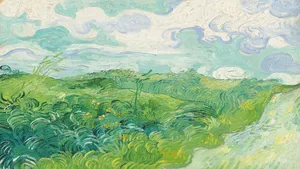Eat your way across Russia

Spanning 17 million square kilometers and 11 time zones, Russia is teeming with taste. The stunning landscapes of the Southern District are littered with vineyards. The Northwest has a growing reputation for seafood, and a long-standing tradition for the innovative culinary use of cod liver. Siberia is abounding with pelmeni (known as “the heart of Russian cuisine”), as well as rustic flavors with roots in hunting--such as smoked wild meats with taiga herbs, fruity, berry-laden accompaniments and sliced raw fish (stroganina). And, of course, Moscow and St. Petersburg, cosmopolitan centres of fine cuisine, have it all.
Russian national cuisine spans cultures, ethnic groups and influences across borders. To show the country’s culinary heritage, Google Arts & Culture teamed up with The Federal Agency for Tourism in Russia and cultural partners Mosfilm cinema concern, The State Tretyakov Gallery and The State Russian Museum to create, “Eat Your Way Across Russia,'' a digital hub that showcases stories and traditions from more than 20 regions, highlights over 100 restaurants and iconic gastronomic points across the country and introduces 11 chefs, experts and food enthusiasts. They helped to put all these pieces into one delicious puzzle that includes 65 online exhibitions about Russia’s food culture and more than 1000 images and videos from different parts of the country.
Start your journey with a typical Soviet breakfast.
Raise a glass for Abrau-Durso, one of Russia’s Champagne capitals.
Tell the difference between the Soviet cafeterias — zakusochnayas, ryumochnayas and rivnayas.
Read behind-the-scenes stories about blini and other iconic Russian dishes that made history.
Explore the secrets of pelmeni, “a heart of Russian cuisine.”
Learn about samovar, a famous Russian gadget
Try a spoon of honey, a traditional Russian honey that became a vital part of the local folklore.
Feel the taste of the famous Russian Tula pryanik that have been baked since the 17th century.
The Tastes and Regions
Discover the flavors of Russia through the unique plates of Russia’s regions. Visit Siberia and explore its culture of hunters, game dishes and the local tea. Or the Volga region with ukha soup and the variety of dumplings called manty/manti that came from the former Soviet Asia. Or the Central region with its food luxuries (e.g. Leo Tolstoy's dessert). Don’t forget “the Venice of the North,” or St. Petersburg, and the local "pyshki," deep-fried ring-shaped donut-like buns that became the symbol of the city. And go to the edge of the world for gems of Russia's Far Eastern cuisine -- Kamchatka crab, Sakhalin caviar or Kyorchekh, Yakutia's best-known dessert. Yes, it’s so easy to get lost among all these tastes, but our guides are here to help! Food connoisseurs and restaurateurs prepared their stories on what they love about Russian cuisine.The Specialities
A special section of the exhibition is dedicated to Soviet tastes. Besides the well-known borshch, syrniki with smetana, blini and oladyi, it unpacks other curiosities of Russian Soviet cuisine that truly became a cultural code – cutlets, okroshka, tvorog rings (a local variation of eclairs and profiteroles), ponchiks (donuts) and condensed milk. Sounds delicious? The exhibits will also guide you through the backstage of the production of Russia’s gastronomic hallmarks, Kolomna pastila and pelmeni, and take you for art walks through the local farm.The Drinks
Thirsty for more? Explore the section about Russia’s wine, craft beer and cocktails that beats all the stereotypes about the bar culture in the country. The exhibits tell stories about nastoika culture and its origins in the 19th-century liqueur making, reconstruct a 300-year history of kvass and highlight the key moments of the craft revolution led by local beer, cider and medovukha. Or do you prefer tea? Find out more about how tea got to Russia and how it stayed. Or maybe you have an appetite for art? Explore meals of classical Russian literature, see the Russian fairy tales through a foodie’s eyes, or spend a day with Russian paintings to see a traditional Russian feast. The projects also highlight the traditions of khokhloma, gzhel, imperial porcelain, crystal and other tableware that was used for Russian banquetes.
Explore Russia’s delicious range of flavors and traditions on the Google Arts & Culture website or our free Android or iOS app and join the conversation using the hashtag #eatacrossrussia.








